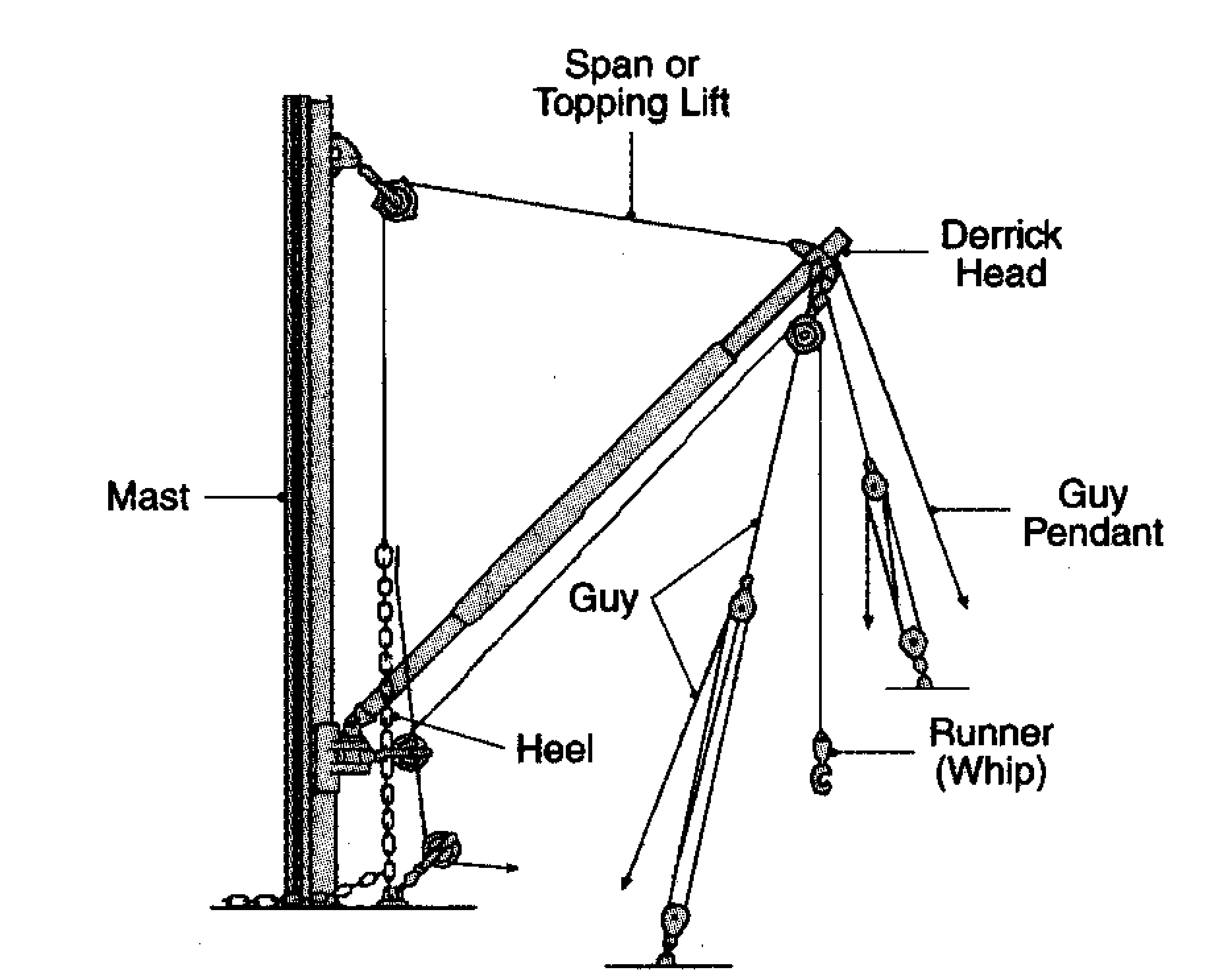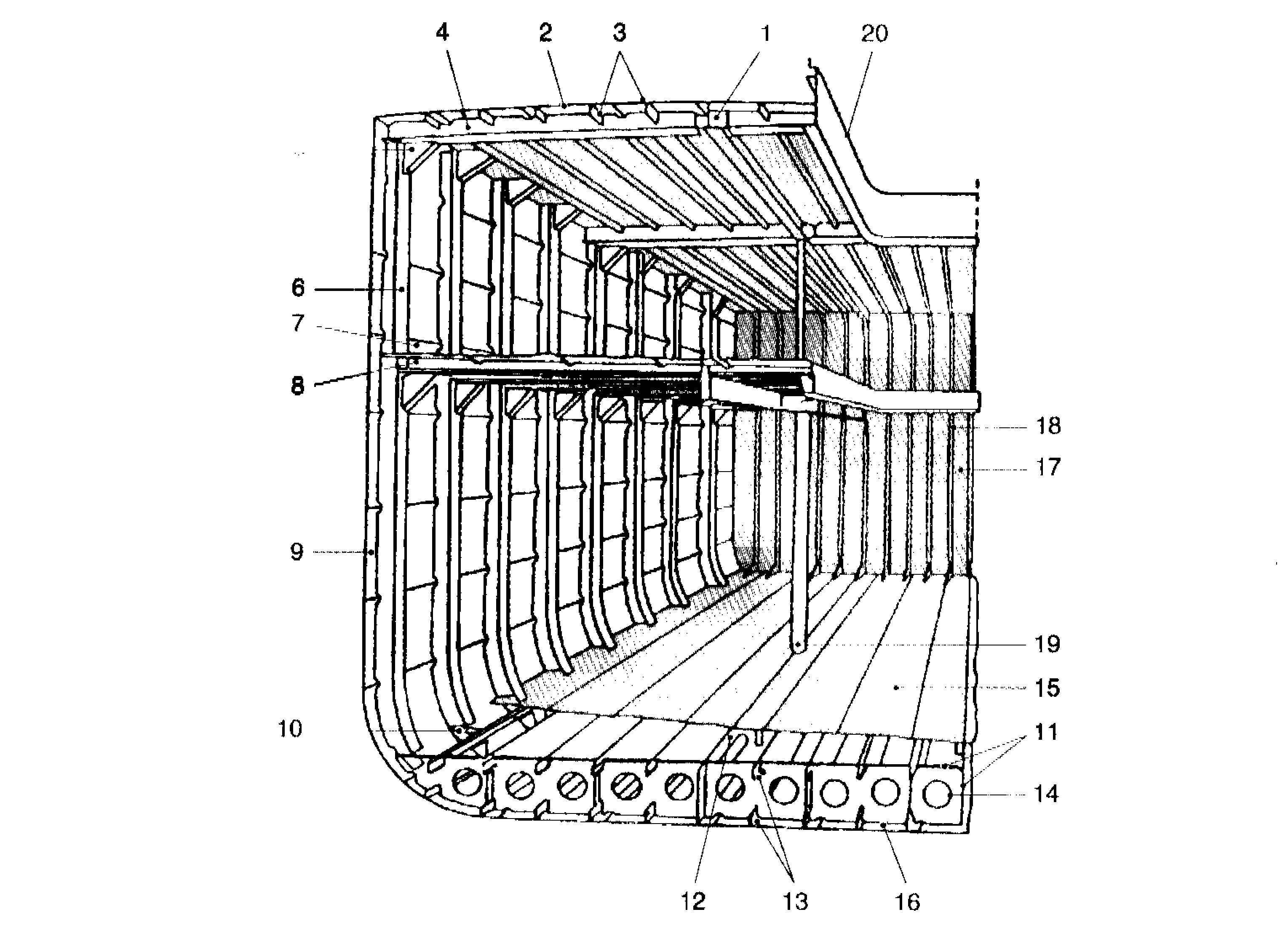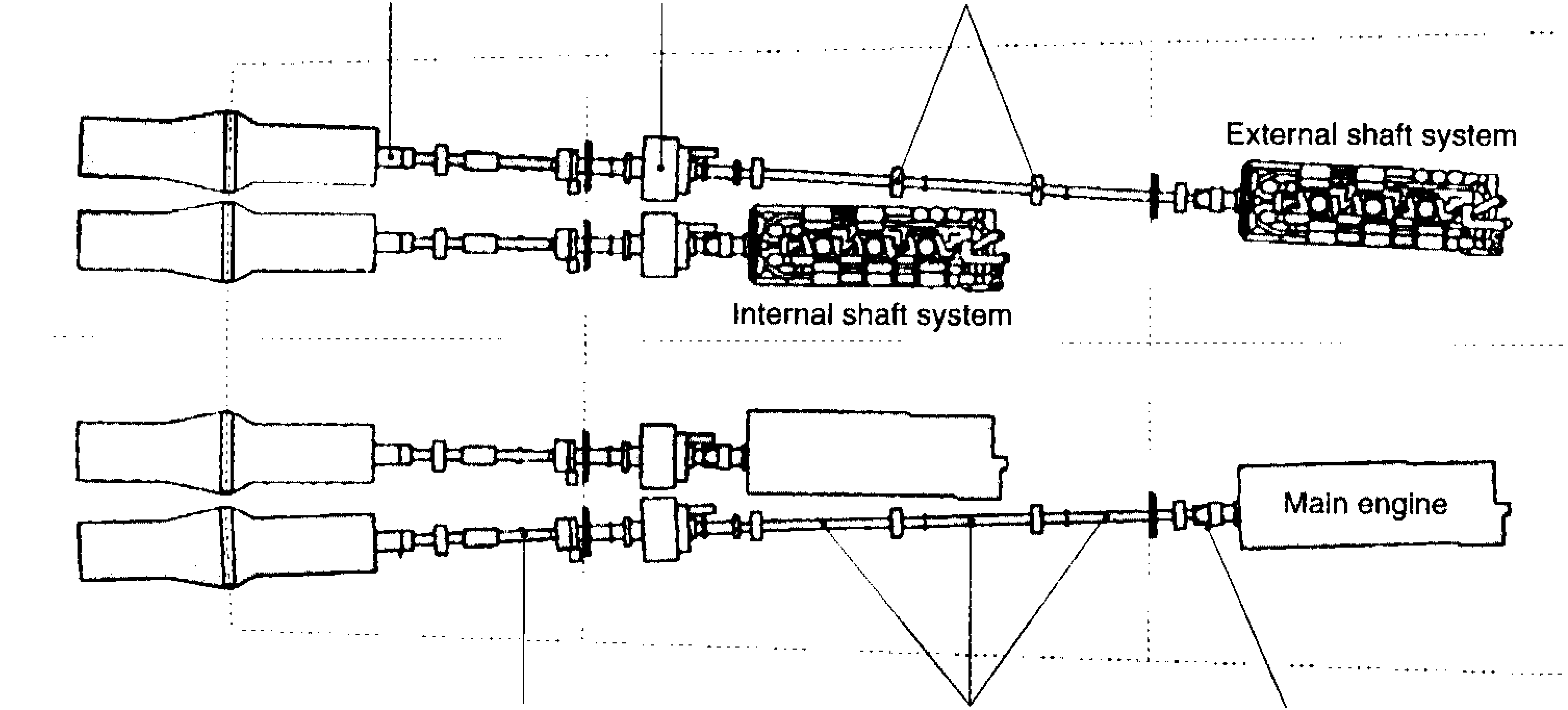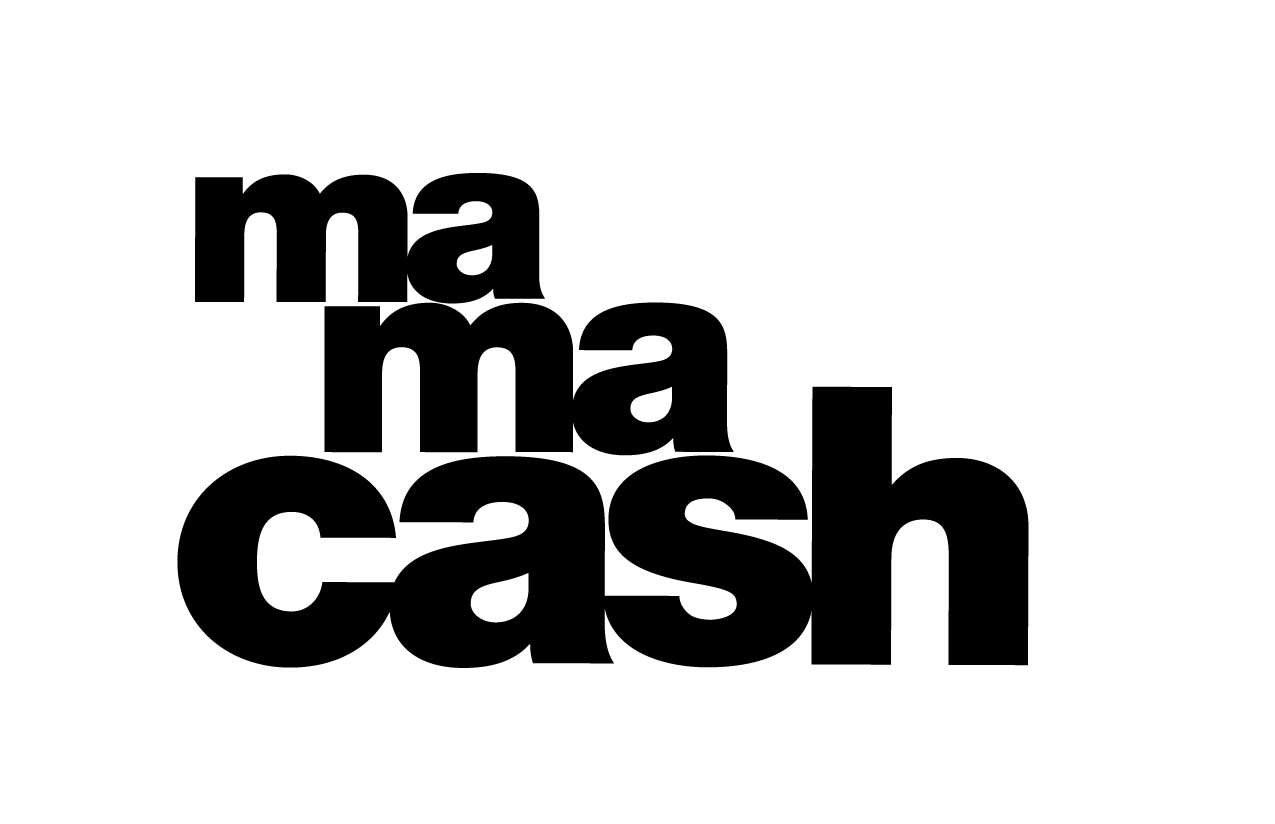UNIT 3 SHIPS AND SHIPS TERMS SHIPS SYSTEMS AND
COMMUNITY ORGANISATION AND SCHOOL PARTNERSHIPS SCHOOL FACT SHEETEMPLOYER RECOMMENDATION FORM THE OAS SCHOLARSHIPS PROGRAMS
Relationships at the Surface of Functional Materials Fuengirola
0 CALL FOR APPLICATIONS SURPLACETHIRD COUNTRY SCHOLARSHIPS OF THE
0 CSC – FELLOWSHIPS 2014 HELMHOLTZ CENTRE RESEARCH CENTRE
0 TECHNICAL REPORT CONSERVATION PARTNERSHIPS INDICATORS OF SUCCESS BY
Unit 3
SHIPS AND SHIPS TERMS
SHIP'S SYSTEMS AND EQUIPMENT
|
cargo gear derrick lifting capacity mast nautical equipment ship’s systems ship's crane shore crane |
anchor gear crew accommodation freeboard life-saving apparatus machinery mooring gear samson post manifold valve |
Ship’s Systems
The ballast pumping system comprises a 500 m³/hr centrifugal pump and two main centrifugal self-priming pumps, each of which has a capacity of 1,000 m^/hr De-ballasting, excluding stripping, can be undertaken in eight hours. The bilge system in all the holds, except Hold 1, incorporates two centrifugal, self-primping pumps rated at 200 m^/hr, and a single piston type bilge pump of 10 m³/hr. The centrifugal pumps discharge bilge water directly overboard, while the piston unit discharges into a settling tank. For Hold 1, there is a single centrifugal pump with a 100 m³/hr capacity and a bilge water settling tank. The pump extracts water from the hold's bilge wells and pumps it either overboard or to the settling tank. Emergency drainage of Hold 1 is also possible using the engine room bilge pumps.
The central coolers, the main engine cylinder cooling fresh water cooler, and the main engine lub oil cooler are all plate type, and were manufactured by Alfa Lavals, Sweden. All the steam heaters on the Lara Rickmers class are of the shell and tube type.
Kværner of Norway provided the solid/oil waste incinerator unit, which has an approximate burning capacity for solid waste of 50 kg/hr for sludge oil.
The engine room is arranged with a control and monitoring system, that meets LR class requirements for a periodically unmanned engine room. Stein & Sohn of Germany supplied the main engine control system, as well as its Camos 2000 engine room alarm and monitoring system. Auxiliary equipment in the engine room includes centrifugal type sea water, fresh water, ballast and bilge pumps, all driven by electric motors. These are capable of operating in regular conditions in both suction and discharge mode without overloading.
Other Equipment
The handling of cargo is carried out either by the ship's own cargo gear or by shore cranes.
The derricks are the ship's cranes, and their lifting capacity can vary from 3 tonnes to 50 tonnes or more. If heavy items such as locomotives or boilers are carried, jumbo derricks capable of lifting up to 200 tonnes are provided. They are operated by the ship's winches. Derricks are necessary when cargo is loaded or discharged into barges and are also used on the ship's quayside, where they can work in conjunction with shore cranes. The derricks are supported by masts or samson posts.
The bridge of a vessel is the navigating centre of the ship where her course is determined. It is generally situated aft. In recent years the tendency to have machinery aft has caused the navigating bridge to be similarly located, particularly on cargo ships and tankers. Included on the navigating bridge is the helm, and also a large amount of nautical equipment, including radar sets, a gyro compass, a radio direction finder, etc. The bridge is in direct communication with all parts of the vessel.
Crew accommodation on modem cargo ships and tankers is situated aft in close proximity to the machinery. Standards of accommodation are high, and are controlled by various IMO and ILO statutory regulations.
There are various statutory provisions concerning the quantity and type of life-saving apparatus carried on a vessel. Broadly speaking, it is determined by the type of the vessel, crew establishment and passenger certificate (authorized number of passengers permitted to be carried). The life-saving apparatus includes lifeboats, inflatable rubber liferafts, lifebuoys and individual lifejackets.
The draught (or draft) of a vessel is the vertical distance from the keel to the waterline. The maximum permitted draught varies according to the zones, seasonal periods and waters in which the ship plies. Freeboard is the distance measured amidships from the water line to the main deck of a vessel. This is normally the uppermost continuous deck in a ship with one or more decks. However, in a shelter deck vessel it would be the next deck below.
Comprehension & vocabulary
A.1 Answer the following questions:
1. What is the cargo handled with?
2. What is the usual capacity of the ship's derricks and cranes?
3. Which type of cargo is carried by jumbo derricks?
4. What is the function of the bridge?
5. Where is the bridge situated?
6. What equipment does the bridge accommodate?
7. Where is the crew accommodation situated?
8. What does the ship's safety equipment depend on?
9. What does life-saving apparatus include?
10. What is the draught of a ship?
11. What is the freeboard of a ship?
A.2 Write down the main elements of the ship's construction under the following headlines (see the relative drawings):

|
ship’s hull |
superstructure |
cargo gear |
|
|
|
|
|
|
|
|
|
|
|
|
|
|
|
|
|
|
|
|
A.3 Have a look at the sketches above (ship’s derrick) and fill in the following missing words: tackles • runner • mast • derrick head • topping lift • guy pendants
The ship's derrick
A derrick is a strong boom pivoted on the 1. _____________ at the lower end. It is fitted with stays and 2. _____________ to swing it to port and starboard. The derrick boom is lifted by the 3. _____________ or span fixed at the
4. ____________ and passing through a block on the top of the mast. A whip or
5. ____________ is used to lift and lower the cargo. The guy pendants are operated by 6. ____________ .

A.4 Say which term from the basic terminology is described below:
• Samson post • derrick • life-saving apparatus • cargo gear
•freeboard • bridge • accommodation • draught • NAVAIDS • ballast •freeboard
_____________ : height between the water level and the upper deck.
_____________ : boom or spar used for hoisting or lowering loads.
_____________ : depth in water at which a ship floats.
_____________ : distance from the top deck to the water.
_____________ : ship's own equipment for loading and discharging.
_____________ : instruments used for the ship's navigation.
_____________ : cabins for the ship's personnel.
_____________ : control centre of the ship.
____________ : means and equipment for the rescue and protection of seafarers, such as lifeboats, liferafts, lifejackets, etc.
_____________ : sea-water carried in tanks for the ship's stability.
A.5 Supply the right marine engineering term from the following list:
• propulsion system - capacity • four-bladed • main diesel engine • maximum continuous rating • consumption • generator sets • emergency
Lara Rickmers is fitted with a single, fixed pitch, bronze,
1. ___________________ propeller, driven by one Cegielski/SuIzer 6RTA58T
2. ___________________ . Built in Poland by the Suizer licensee, this six-cylinder unit is capable of an output of 11,400 kW (15,280 bhp) at 101.5 rev/ min.
Selected to provide the owner with a fuel efficient 3. ____________________ the main engine gives the vessel a competitive service speed of 15.5 knots at 12 m draught and 85 per cent MCR. The specific 4. ____________________ is estimated to be 169 g/kWh, within +/-3 per cent. Two Aalborg boilers are installed in the engine room. The auxiliary boiler is designed to bum heavy fuel oil (HFO) with a viscosity up to 600 cSt at 50°C, and has a 5. ___________________ of about 2,800 kg/hr. The forced circulation type exhaust gas boiler has capacity of 1,500 kg/hr, at 5 per cent
6. ___________________ (MCR) of the main engine. Electricity onboard of the ship, is provided by three main diesel
7. ___________________ each with a rated output of 960 kW at 900 rev/min. These are backed up by a MANDEMP 8. ___________________ generator, which is installed in a separate compartment.
A.6 Match the English term on the left with the Italian equivalent on the right:

A.7 Give your language equivalents for the ship's terms on the drawing on p. 28 (Ship's Hold):
1. central stringer ___________________
2. deck plating ___________________
3. deck stringers ___________________
4. deck beam ___________________
5. knee, angle bar ___________________
6. frame ___________________
7. 'tween-deck plating ___________________
8. 'tween-deck beam ___________________
9. side plating (strakes) ___________________
10. margin plate ___________________
11. central girder ___________________
12. side stringer ___________________
13. bottom and double bottom stringers ___________________
14. floor ___________________
15. tank top, inner bottom ___________________
16. bottom plating (strakes) ___________________
17. cross bulkhead ___________________
18. bulkhead stiffener ________________
19. hold pillar ________________
20. hatch coaming ________________
Design of a Ship's Hold (Cross Section)

A.8 Fill in the following missing terms (structural members of the ship): • stem • stern post • beams • angle bars • keel • knees • brackets • stringers • floors • frames
The 1. ____________ is a longitudinal structural member at the bottom of the vessel, to which floors and frames are attached. The 2. ___________ is a structural member forward, rising from the keel and forming the how. The 3. ____________ is a vertical member at the after end of the hull. The transverse members making up the structure of a ship are the 4. __________ on the sides, the 5. ___________ supporting the decks, and the 6. ___________ forming up the double bottom space. The longitudinal members holding together the bottom, side plates and the deck plating are bottom, side and deck 7. _____________ . Small-sized members used for joining and reinforcing the ship's structural members are 8. ____________ , 9. ____________ , and 10. __________ .
A.9 Ship Terms-Revision:
Aboard is the opposite to _____________ .
In the past the ____________ was usually placed amidships.
The openings in the deck are called ____________ .
Through the hatches, entrance into the _____________ is possible.
The cargo is discharged or loaded with the ship's cranes or ____________ .
The equipment of a derrick includes standing or fixed and running
Derricks are supported on the _____________ or king posts.
On board ship instead of the terms behind and in front of, ___________ and _____________ are used.
When the ship is coming to her berth or anchorage, the Chief Officer stands on the _____________ .
The ladder leading from one deck to another is called a _____________ .
A passage or a corridor in a ship is called the ____________ .
The lefthand and the righthand sides of the ship are referred to as the ____________ and the ____________ side.
The ____________ of the bridge project out of the bridge on either side.
To get from the side alleyway into the cabin or any other space inside the ship, you must step over the ____________ .
The ____________ is also a raised vertical edge of a hatchway.
The derricks and deck cranes are driven by _____________ either electrical or hydraulic.
The ____________ winch is used for shifting the ship alongside the same quay or pier.
B. Grammar
B.1 Adverbs are mainly formed by adding -ly to the adjective, (e.g. strong -strongly, quick - quickly,). Find such adverbs in the reading text and state whether they refer to a verb, an adjective or to the whole sentence (the first example has been worked out for you):
1. commonly referring to the verb carry
2. ____________________ ____________________
3. ____________________ ____________________
4. ____________________ ____________________
5. ____________________ ____________________
6. ____________________ ____________________
7. ____________________ ____________________
"Unicorn " arrangement of main engines and waterjets
Water jet Intermediate
pump shaft Reduction gear shaft bearing
Intermediate shaft Intermediate shafts Universal joint

C. Translation
C.I Translate the following sentences into English:
1. T picchi di carico sono manovrati (operate) dai lavoratori portuali (docker).
2. L'equipaggiamento di salvataggio ^ stabilito (provide) da norme previste dalla legge (statutory regulations).
3. Sul ponte di comando c'e la timoniera dotata di svariati e moderni strumenti di assistenza alia navigazione.
4. Nelle navi moderne il ponte di comando e di solito situato a poppa.
5. Ogni nave deve essere dotata di equipaggiamento di salvataggio e in particolare di scialuppe e cinture di salvataggio.
6. Lo scarico di una petroliera e eseguito (carry out) principalmente per mezzo di una stazione di pompaggio (pumping station) con base a terra.
7. I carichi pesanii sono caricati per mezzo di potenti gru o pontoni galleggianti con elevata porlata (lifting capacity).
1232008 INTEGRATED COMMUNITY SERVICE PARTNERSHIPS SITE APPLICATION DESCRIPTION
2 013 IPC ALPINE SKIING WORLD CHAMPIONSHIPS LA MOLINA
2 P OLISH SCHOOL OF MEDICINE MEMORIAL FUND SCHOLARSHIPS
Tags: ships and, cargo ships, ships, terms, systems
- AMENDED BOARD OF SELECTMEN THURSDAY SEPTEMBER 13 2007 700
- PULMONARY FUNCTION TESTS SPIROMETRIC PATTERNS IN CHRONIC OBSTRUCTIVE AND
- 02-0275
- ETYKA INFORMATYKA JEDNĄ Z NAJWAŻNIEJSZYCH WARTOŚCI CZŁOWIEKA JEST
- EL “FIN DE SEMANA DE LAS ARTES” CONVIERTE BILBAO
- NHS CHC PANEL FRONT SHEET 1 OF 2 NAME
- UNIVERSIDAD AUTÓNOMA DE CHIHUAHUA F ACULTAD DE CIENCIAS AGROTECNOLÓGICAS
- LA MUJER COMO SUJETO ¿UTOPÍA O REALIDAD? MARÍA
- INŽENJERSKA KOMORA CRNE GORE NA OSNOVU ČLANA 27 TAČKA
- JUEVES 14 DE AGOSTO DE 2008 DIARIO OFICIAL (SEGUNDA
- EUROPEJSKI PASZPORT ZAWODOWY 1 CELE LEKCJI A)
- Lengua Castellana y Literatura “espíritu Medieval” Nombre del Alumnoa
- LA PHOTO RESPIRATION I INTRODUCTION A LA LUMIÈRE LES
- SPETTLE BARCLAYS BANK IRELAND PLC UFFICIO LENDING MANAGEMENT VIA
- END USER LICENSE AGREEMENT THIS COPY OF AIRMONITOR (THE
- DECOMPRESSION AND ALTITUDE SICKNESS 201010 PY MINDMAPS IRWIN AND
- BOIL WATER NOTICE INADEQUATE DISINFECTION FOR WATER ( NAME
- CERERE TRANSFER SPORTIV CEREREA ESTE SUB SANCTIUNEA NULITATII DACA
- F COUNTY HOUSING AUTHORITY AMILY OBLIGATIONS 24 CFR 982551
- THE MUSEUM THE TOUR THE SENSES BY SHELLEY RUTH
- MANTENIMIENTO Y SEGURIDAD INDUSTRIAL ARTÍCULO ELABORADO POR JOSE MOLINA
- PRINCIPIOS DE INTERACTIVIDAD TELEVISIÓN INTERACTIVA Y REALIDAD VIRTUAL ALBERTO
- VICTOR ECHEVERRIA COMUNIDAD DE PROPIETARIOS DE LA PROMOCIÓN “PLAZA
- DECEMBER 31 2008 TO THE ADMINISTRATOR ADDRESSED SUBJECT CHANGES
- INDIKATOR 217 (K) MONATLICHES NETTOEINKOMMEN VON FAMILIEN NORDRHEINWESTFALEN JAHR
- SOCIAL WORK DEPARTMENT DR CELIA WILLIAMSON ASSOCIATE PROFESSOR VITA
- REQUEST FOR PROPOSAL CSUS0313 N REQUEST FOR PROPOSAL (RFP)
- BROWNFIELDS RUBRIC CRITERIA YES? NO? 1) THOROUGHLY AND COMPLETELY
- ANMELDELSE AF ARBEJDSULYKKE (INDSENDES INDENFOR 6 DAGE TIL DEN
- 6 LA PERSPECTIVA DE LA ELECCIÓN PÚBLICA JAMES
 S3 TREE BASED ON SHIRAI (1996) WINCHELL ET AL
S3 TREE BASED ON SHIRAI (1996) WINCHELL ET AL THE TICAD V MINISTERIAL PREPARATORY MEETING (ADMINISTRATION NOTE) AS
THE TICAD V MINISTERIAL PREPARATORY MEETING (ADMINISTRATION NOTE) AS LOMOARCPSD|977395 SAMENVATTING BOEKHOUDEN TRIMESTER 2 LOMOARCPSD|977395 1 FINANCIEEL
LOMOARCPSD|977395 SAMENVATTING BOEKHOUDEN TRIMESTER 2 LOMOARCPSD|977395 1 FINANCIEELINFORMATION ABOUT MULTISCOPE COMPANY OVERVIEW THE COMPANY WAS ESTABLISHED
 MINISTERIO SECRETARIA GENERAL DE INMIGRACIÓN Y EMIGRACIÓN DE EMPLEO
MINISTERIO SECRETARIA GENERAL DE INMIGRACIÓN Y EMIGRACIÓN DE EMPLEO TRIBUNAL REGIONAL DO TRABALHO DA 8ª REGIÃO PAAP 1PEDIDO
TRIBUNAL REGIONAL DO TRABALHO DA 8ª REGIÃO PAAP 1PEDIDO 200 PROSPECT STREET EAST STROUDSBURG PA 183012999 HTTPSWWWESUEDUUNIVERSITYSENATEINDEXCFM UNIVERSITY
200 PROSPECT STREET EAST STROUDSBURG PA 183012999 HTTPSWWWESUEDUUNIVERSITYSENATEINDEXCFM UNIVERSITY 3°B – DISTANCE LEARNING ENGLISH – MR COUSINIÉ HEY
3°B – DISTANCE LEARNING ENGLISH – MR COUSINIÉ HEY NEW YORK SCIENCE JOURNAL 20125(9) HTTPWWWSCIENCEPUBNETNEWYORK A SURVEY OF
NEW YORK SCIENCE JOURNAL 20125(9) HTTPWWWSCIENCEPUBNETNEWYORK A SURVEY OF MAMA CASH IS EEN FONDS MET BEPERKTE MIDDELEN ELK
MAMA CASH IS EEN FONDS MET BEPERKTE MIDDELEN ELKMADAME LOUISE FRÉCHETTE IS A DISTINGUISHED FELLOW AT THE
 FEDERAL COMMUNICATIONS COMMISSION DA 12402 BEFORE THE FEDERAL COMMUNICATIONS
FEDERAL COMMUNICATIONS COMMISSION DA 12402 BEFORE THE FEDERAL COMMUNICATIONS CHAIRS AROUND THE TABLE LESSON RESEARCH AIM STUDENTS WILL
CHAIRS AROUND THE TABLE LESSON RESEARCH AIM STUDENTS WILL “THE EVOLUTION OF DSCAM GENES ACROSS THE ARTHOPODS” ARMITAGE
“THE EVOLUTION OF DSCAM GENES ACROSS THE ARTHOPODS” ARMITAGEHOW DOES ARMENIA EDUCATE ITS PUBLIC ADMINISTRATORS IN PROTECTING
MONOCLONAL ANTIBODYBASED PRODUCTS POISED FOR CONTINUED GROWTH AS DRUG
BUDGET STIPULATIONS 200910 SERVICES AND ACTIVITIES FEE AWARDS ACADEMIC
 YO DDª EN CALIDAD DE AUTOREDITOR DE LA
YO DDª EN CALIDAD DE AUTOREDITOR DE LA LEMBAR PERSETUJUAN NAMA TRI ERY AMBARWATI NIM
LEMBAR PERSETUJUAN NAMA TRI ERY AMBARWATI NIM  INSTRUMENT RECEIPT & CONDITION NOTES OSDCAL02 REV 01 (082015)
INSTRUMENT RECEIPT & CONDITION NOTES OSDCAL02 REV 01 (082015)